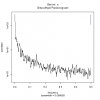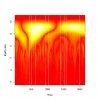- Joined
- 8/8/10
- Messages
- 343
- Points
- 53
Hello together,
I wonder, whether anyone has experience with deep learning in application to time series?
Not necessarily financial time series, I, for one, have an interest in (short-term) prediction of gas and energy consumption.
There are some papers on subject, for example this one:
http://cs229.stanford.edu/proj2012/BussetiOsbandWong-DeepLearningForTimeSeriesModeling.pdf
However, since they provide no source codes (data are publicly available), it is not a result, it is, according to the manifest of reproducible research an advertisement of a result.
I have an impression that (one-dimensional) time series is just too simple for deep learning since there are few (if at all) hierarchies of abstraction; contrary to, say, face recognition, by which one can at first recognize strokes/pixel patterns then eyes/ears/noses and then Peter/Paul/Sarah.
However, deep learning might probably be applied to pattern recognition.
Just like a chartist looks at first at 5 years chart, then at 6 months chart then at monthly chart and probably at even finer scales...
Any thoughts?
I wonder, whether anyone has experience with deep learning in application to time series?
Not necessarily financial time series, I, for one, have an interest in (short-term) prediction of gas and energy consumption.
There are some papers on subject, for example this one:
http://cs229.stanford.edu/proj2012/BussetiOsbandWong-DeepLearningForTimeSeriesModeling.pdf
However, since they provide no source codes (data are publicly available), it is not a result, it is, according to the manifest of reproducible research an advertisement of a result.
I have an impression that (one-dimensional) time series is just too simple for deep learning since there are few (if at all) hierarchies of abstraction; contrary to, say, face recognition, by which one can at first recognize strokes/pixel patterns then eyes/ears/noses and then Peter/Paul/Sarah.
However, deep learning might probably be applied to pattern recognition.
Just like a chartist looks at first at 5 years chart, then at 6 months chart then at monthly chart and probably at even finer scales...
Any thoughts?


